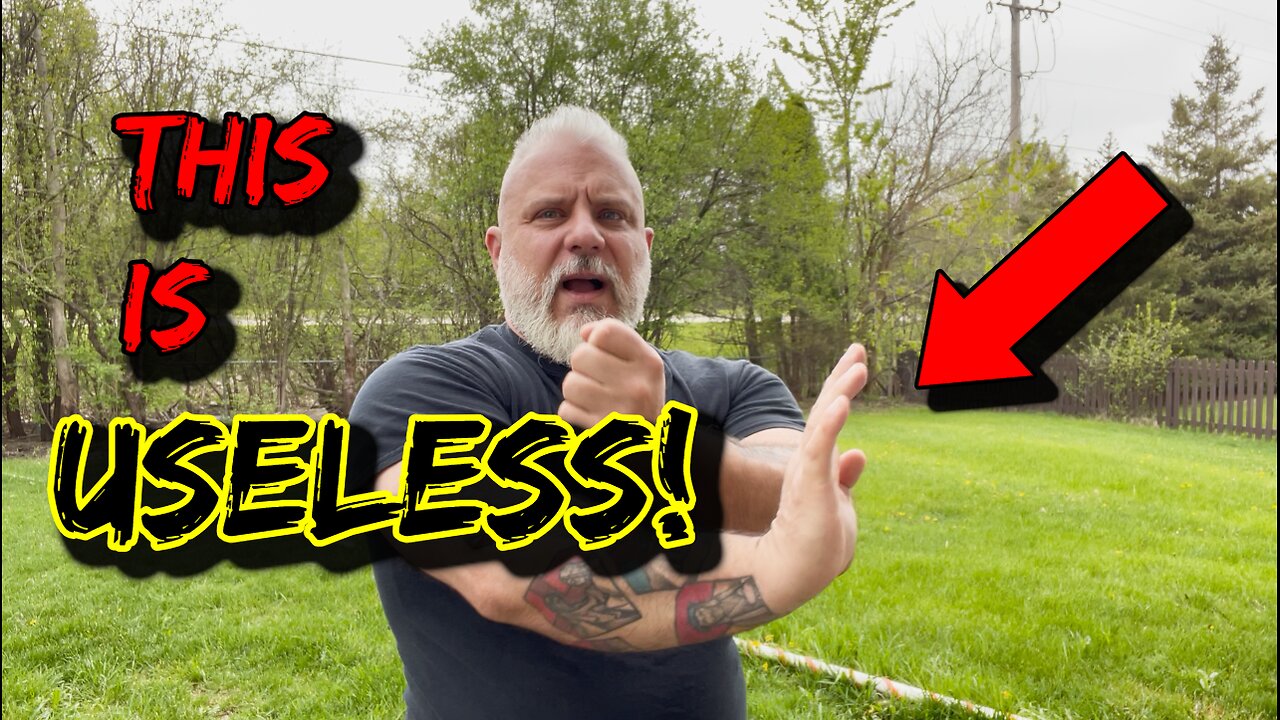Premium Only Content

This Wing Chun Move is USELESS!
The world of Wing Chun is steeped in history, philosophy, and controversy. While millions flock to learn its rapid blocking techniques and legendary close-quarters power, certain moves spark more debate than others. High on that list is the pak sau—a technique that, at first glance, seems simple, even “useless” to some. But is it?
In this guide, we’ll reveal why the pak sau is so much more than a basic block, and how understanding its purpose can transform your training, stability, and self-mastery. Whether you’re a curious beginner or a seasoned martial artist, this article is your definitive resource for demystifying the pak sau.
What Is the Pak Sau in Wing Chun?
The pak sau, sometimes spelled “pak sao,” translates loosely to “slapping hand” or “pressing hand.” It’s a movement where one hand deflects or redirects an incoming force, typically focusing on control rather than brute strength. But its true role is far more subtle, guiding practitioners toward self-perfection and core Wing Chun principles.
Quick Fact:
In classic Wing Chun forms, the pak sau is executed using both hands, teaching stability and proper body mechanics, not just hand speed.
The Main Purposes of pak sau
Self-Perfection: Practicing pak sau encourages you to understand your own structure, timing, and intent—rather than just copying a motion.
Stability Training: By engaging both sides of the body, pak sau builds true stability and controlled movement—an essential for real-world block-and-strike scenarios.
Defensive Mindset: The technique blends offense and defense, where attacking with pak sau also provides a protective barrier. This principle lies at the heart of Wing Chun’s approach.
Pro Tip:
High-level martial artists perfect the pak sau to test and refine their own stance and reactions, not to “beat” an opponent’s hand in a competitive sense.
Why Do People Dismiss the pak sau as Useless?
Popular critique videos often label pak sau as “ineffective” because they evaluate it out of context—without understanding its role in developing structure, distance, and intent. The technique was never designed as a standalone “fight-winning” move but as a process for teaching vital principles.
Wing Chun Kung Fu taught by Retired Police Officer and Tactics Expert, Dominick Izzo.
Dominick Izzo has been training Wing Chun since 1998 and has been teaching in the Chicago area since 2008. He was the first American Wing Chun instructor to be published and published in back to back issues in Wing Chun Illustrated.
He is known for his realistic, aggressive and combative approach to Wing Chun Kung Fu.
⚠️ Support the channel! https://www.paypal.com/paypalme/IzzoWingChun
⚡️ Join my Facebook Group Page! https://www.facebook.com/profile.php?viewas=100000686899395&id=100063545256211
-
 1:02:58
1:02:58
Russell Brand
4 hours agoDoes the Bible Foretell Today’s Conflicts? — Dinesh D’Souza - SF664
77K10 -
 LIVE
LIVE
Dr Disrespect
5 hours ago🔴LIVE - DR DISRESPECT - ARC RAIDERS - SKILL TREE EXPERT
2,485 watching -
 19:05
19:05
Cash Jordan
5 hours agoIllegals “DISMANTLE” LA Gated Mansions... Millionaires HOMELESS as Looters Take REPARATIONS
6.42K58 -
 5:49
5:49
Buddy Brown
4 hours ago $1.09 earnedI Tried to WARN YOU Congress Would SNEAK It In! | Buddy Brown
2.49K8 -
 LIVE
LIVE
The Tom Renz Show
1 hour agoSusie Wiles vs Vanity Fair vs Truth
188 watching -
 LIVE
LIVE
Film Threat
23 hours agoFUNERAL FOR A FRANCHISE: STAR TREK - A SPECIAL GLOBAL EVENT | Film Threat Live
176 watching -
 1:02:04
1:02:04
Jeff Ahern
2 hours ago $0.67 earnedNever Woke Wednesday!
12K3 -
 44:30
44:30
DeVory Darkins
3 hours agoIlhan Omar dealt MAJOR BLOW after CNN host catches her in a lie
165K83 -
 1:01:47
1:01:47
Timcast
4 hours agoTrump Orders "Complete Blockade" of Venezuela, Potential Act of WAR
152K126 -
 2:53:04
2:53:04
Steven Crowder
7 hours agoVanity Fair's Susie Wiles Hit Piece: Who's To Blame PLUS Special Guest Jillian Michaels
515K745